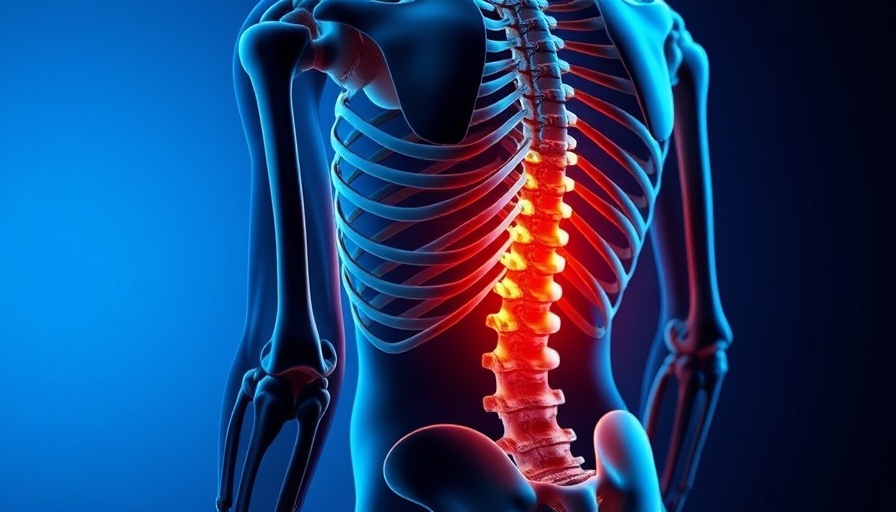
Lower Back Pain: A Hidden Epidemic in Aging Populations
A recent nationwide study in China has unveiled alarming statistics regarding lower back pain (LBP) among older adults suffering from sarcopenia, the age-related loss of muscle mass and strength. The research, which analyzed over 8,000 participants from the China Health and Retirement Longitudinal Study, demonstrates a striking correlation: 24% of individuals with sarcopenia reported experiencing LBP, a significant jump from just 16% of their counterparts with normal muscle mass. This insight sheds light on an often-overlooked aspect of aging that can severely impact the quality of life for seniors.
Gender Differences in Back Pain Incidence
The study highlights a troubling gender disparity in the prevalence of lower back pain among individuals with sarcopenia. Nearly 29% of women affected by muscle loss reported experiencing LBP compared to 18% of men with similar conditions. This notable difference raises questions about the underlying biological and societal factors that may contribute to the increased vulnerability of women to musculoskeletal issues as they age.
The Role of Chronic Conditions and Lifestyle Factors
Furthermore, the data illustrates that multiple chronic health conditions exacerbate the risk of lower back pain in those with sarcopenia. For instance, a staggering 45% of participants with four or more chronic ailments reported LBP, compared to just 13% among those without such conditions. Factors like cardiovascular and kidney diseases seem particularly detrimental, with patients facing 1.4 times and 1.8 times greater risks, respectively.
Notably, mental health issues also have emerged as one of the most significant risk factors. Individuals battling depression were found to be 3.2 times more likely to experience lower back pain, with the prevalence skyrocketing to nearly 54% among this group. This finding underscores the intertwined relationship between mental health and physical well-being, particularly in the aging demographic.
Lifestyle Impacts: Sleep and Environment
In addition to health conditions, lifestyle factors significantly influence the risk of developing lower back pain. As indicated by the findings, older adults who sleep less than five hours a night are at double the risk of experiencing LBP. Those living in rural areas also face a heightened risk, with 54% greater odds compared to urban residents. These insights suggest that interventions targeting better sleep hygiene and environmental factors may hold great potential in alleviating lower back pain in older adults.
Moving Forward: Implications for Care and Interventions
The implications of these findings are profound, offering a clearer picture of the complexities behind managing pain in aging populations dealing with muscle loss. Researchers recommend focused interventions that could address specific risk factors, such as mental health support, sleep optimization, and lifestyle changes, to help decrease the pain burden faced by elders.
As more data emerges on the intersection between muscle health and chronic pain, there remains an urgent need for healthcare systems to incorporate holistic approaches in the treatment and management of musculoskeletal pain among older adults.
Actionable Insights: Steps to Mitigate Pain
To mitigate the risks associated with lower back pain, healthcare providers and caregivers can take several steps:
- Mental Health Support: Ensure that older adults have access to mental health resources to combat depression, which has been linked to increased rates of back pain.
- Promote Physical Activity: Encourage strength training and moderate exercise tailored to seniors to counteract the effects of sarcopenia.
- Enhance Sleep Hygiene: Educate seniors on the importance of good sleep practices, aiming for an adequate amount of restorative sleep.
- Environmental Considerations: Evaluate living conditions and explore options for support in rural areas to improve accessibility to healthcare and services.
As these insights emerge, it is essential for the healthcare community and families of older adults to remain proactive in addressing these issues to enhance the overall well-being of aging populations dealing with muscle loss.
 Add Row
Add Row  Add
Add 




Write A Comment